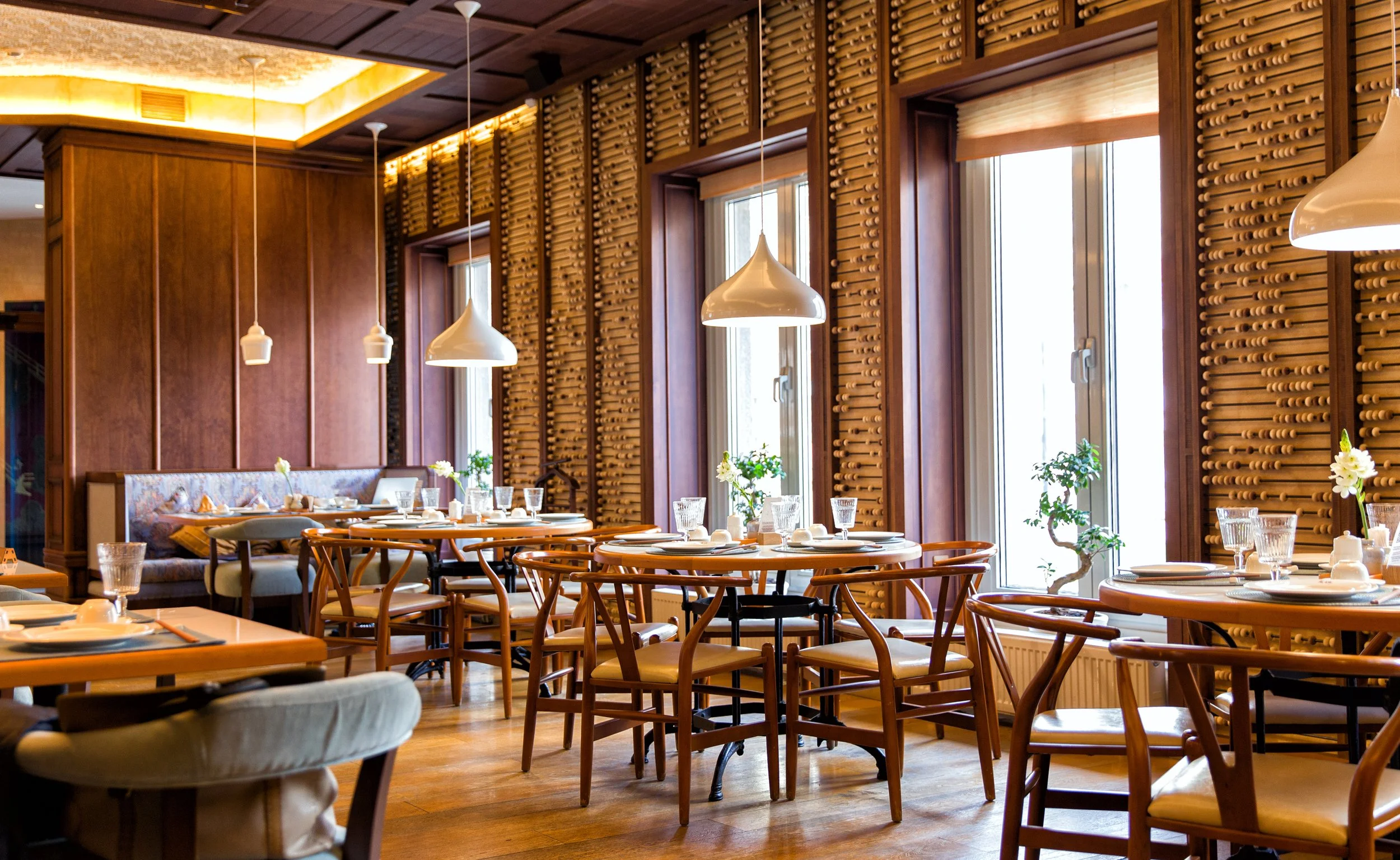By Katie Sullivan, Contributor
The restaurant industry has changed dramatically over the past few years largely due to factors like new technology, external influences (e.g. the pandemic), and ever-changing customer demands, as well as the new trends in the hospitality industry.
To succeed today, restaurants need to keep up with the evolving needs of their clientele. As a result, now more than ever, individual establishments need to stay on top of these changes and adapt fast enough to stay relevant in the face of increasing competition and economic upheavals.
Below, we look at five major changes that are reinventing traditional restaurant operations alongside some false beliefs that restaurant operators need to avoid.
#1 - Technology
Restaurant technology encompasses various modern and state-of-the-art equipment, tools, software, and solutions that food establishments now use on a regular basis. These technologies improve customer service and streamline restaurant processes making them more efficient.
However, restaurant technologies are constantly changing, and restaurants need to keep adapting to the latest technological trends. When suitable technologies are understood and well implemented, they can create more opportunities for improvements whether at the back of the house (such as accounting, payroll, building maintenance, etc.) or front of the house (e.g. digital menus, digital signage, etc).
While we are on the subject of technology, we cannot overemphasize the importance of deploying appropriate technologies and strategies in your restaurant maintenance and upkeep.
Some general restaurant technologies to consider include:
Cloud POS.
Restaurant management systems.
Restaurant maintenance software, especially computerized maintenance management systems (CMMS).
Restaurant automation solutions, for functions like stock and inventory, order processing, or CRM.
False Belief to Avoid
When it comes to technology, restaurant owners will need to dispel the fear among workers that technology will replace their jobs. This kind of thinking often causes employees to resist or frustrate attempts at introducing technological innovations in their restaurants.
That said, restaurant operators can make technology adoption easier by taking time to dispel this belief among their staff. For example, operators can focus on communicating some of the ways in which any new tech being introduced will streamline and transform the work to their workforce. Essentially, staff members need to know that they won’t lose out when technology comes on board.
#2 - Labor Shortages
For a long time, the restaurant industry has faced labor shortages, but all is not lost. Recent changes in the way people work provide unique opportunities to attract the best hands to your establishment.
Current labor trends are driven by concerns like the desire to decrease employee turnover, establish a better work environment, and attract a younger generation of workers entering the workforce.
To achieve all these, as a restaurant owner you need to step back and honestly reassess how you approach recruiting and employment. The following tips can help you to improve your search efforts and results.
Using job search websites - the job search process has improved significantly in the last decade for almost every industry. To mention just a few, online platforms like Indeed and ZipRecruiter have made it easy to create tailored searches for the ideal candidates with the experience and qualities you're looking for.
Involve your current staff. If possible, explore the possibility of introducing an employee referral program. Also don’t forget to look at your current staff to promote into upper-level openings.
Outsource hiring to industry-specific recruitment agencies to help you find the best talent quickly.
In today’s labor market, the preference for flexible work is unavoidable. If you're not yet giving current and new staff the option of hybrid restaurant work, then you might be missing out on the chance to make your restaurant attractive to great staff, especially younger workers.
False Belief to Avoid
Avoid the employment myth that nobody wants to work anymore and that great staff can’t be found. Instead, by adopting the tips mentioned above, you can position your restaurant to keep attracting and retaining the best talent in the industry.
#3 - Evolving Consumer Dietary Needs
Restaurant guests are becoming more specific about the kind of meals they eat and the quality of the food available to them. Furthermore, there is increasing awareness and interest in healthier varieties on the menu (e.g. plant-based diets).
False Belief to Avoid
The long-held myth is that restaurant food is unhealthy. The fact is, it doesn’t have to be that way anymore as diners and restaurants are becoming increasingly health-conscious.
Restaurant owners need to quickly adapt to this reality and leverage this opportunity to offer healthier menu options – this way, they can appeal to a larger crowd. They can further maximize this opportunity by creating awareness about their healthier menu through social media marketing. Publicizing your menu on social media can draw in more patronage and significantly improve business at your restaurant.
#4 - Demand for Different Dining Arrangements Will Remain Strong
Online ordering skyrocketed like never before as a direct result of the pandemic, and for some time it appeared like things would never return to normal. This Morgan Stanley report points to the rapid and sustained increase in online food delivery. That trend is predicted to account for 11% of total restaurant industry sales by 2022 as indicated in the chart below.
Image source (Morgan Stanley research)
False belief to avoid
Although it’s been established that online ordering has taken center stage, avoid the myth that off-premise ordering will replace the traditional dining arrangement. In fact, there are strong indications that dining out is making a strong comeback in 2022.
Restaurants need to prepare for this reality. Rather than focusing on just one type of dining experience, restaurants will do well to prepare to accommodate both crowds by doing the following:
Offering a seamless and prompt online ordering experience.
Enforcing highly-regulated health protocols to assure diners and employees of their safety post-COVID.
#5 - Sustainability Matters
According to the USDA, 30-40% of the food supply in the United States is wasted.
Restaurants need to be mindful about using environmentally friendly and healthier practices in the ways that they order, store and handle food supplies. In particular, they’ll need to adopt practices that will help to minimize waste. Customers are taking note and they are more inclined to patronize businesses that practice eco-friendly and sustainable food handling.
Oracle's 2022 global restaurant survey reports that up to 71% of restaurant guests are more concerned now about the environment than they were pre-pandemic.
Consequently, we can infer that consumers would be more inclined to patronize restaurants that demonstrate commitment to sustainable practices. This is understandable since more and more customers prefer restaurants and dining establishments that care about and act responsibly toward the environment. That said, some tips that restaurant owners can implement are:
Using biodegradable or recyclable packaging for food orders
Storing food correctly
Employing smarter food ordering strategies
False Belief to Avoid
The myth is that sustainability and eco-friendly practices are expensive and detrimental to revenue, though, in reality, things are a bit different. Some clients actively seek out these kinds of restaurants and they are willing to pay a bit more for the experience.
In Conclusion
The changes we have discussed above are by no means exhaustive. Yet, they cover the most pressing changes that you need to know and begin to address in your restaurant today. If you haven’t already, we encourage you to start implementing the tips mentioned above. These seemingly small steps can begin to make significant improvements in your operations and results.
About the Author
After pursuing a career in opera and classical music, Katie Sullivan transitioned career paths into marketing for arts non-profits. As Marketing Manager for Limble CMMS, Katie takes that same passion for positively impacting lives by letting maintenance teams know that there is an easier way to manage--and get credit for--their amazing work.










